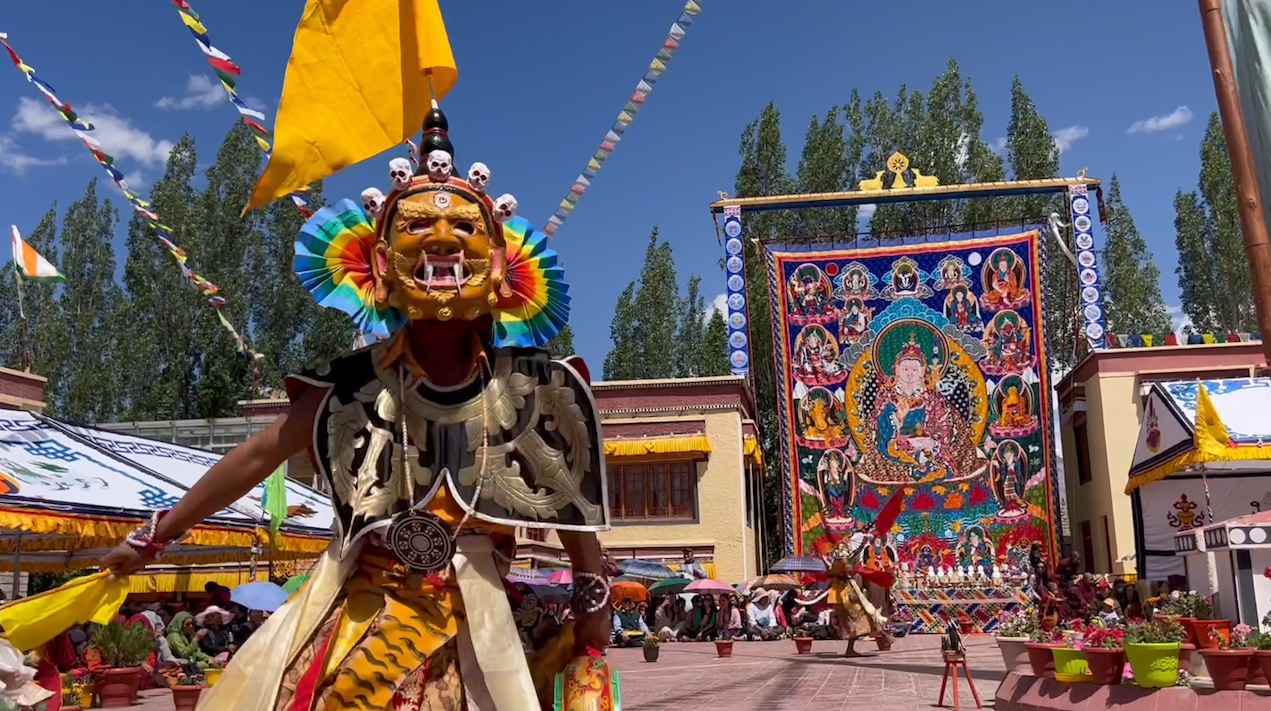Cham – the mask dance of monks
Dawa Dolma
Aug 23, 2023
Cham dance has been an integral part of the life of Tibetan Buddhists – exploring the themes of human life and death, good and evil. The dancers (mostly monks) offer their body, speech and mind (three vajra) while performing and are highly considered a religious dance.
The birth of cham (mask) dance is dated back to the 8th century during the reign of Buddhist master Guru Padmasambhava to cast away the evils by imbuing God’s mask at the foundation laying ceremony of the Samye monastery in Tibet.
The dances of cham are titled according to their purpose, for the different deities they invoke and performed on different ceremonial occasions throughout the year. This particular dance is performed on the auspicious day of the reincarnation of a reverent lama who was recognised. Cham is also a highlight during monastery festivals and lunar new year celebrations.
Traditionally performed in the courtyard of a monastery, cham dance usually begins in the morning with a short mid-day break and lasts till the end of the day. It showcases a rich and profound philosophy of life and death. The monks wear heavy silk brocade robes which represent important deities in Tibetan Buddhism.
The orchestra of cham begins with a pair of cymbals, drums of different sizes, variation of long trumpets and chanting. It has retained many characteristics of folk dance – traditional slow dance sync with hand and foot movement. The magnificent, solemn and majestic cham dance is also a popular pilgrimage sight to witness before death.
Also Read: Is the art of Tibetans in India vanishing?
Dawa Dolma, she is a freelance journalist based in Leh. She writes about climate change, communities, and culture of the Himalayas and she is a Rural Media Fellow 2022 at Youth Hub, Village Square.
Video edited by Novita Singh






